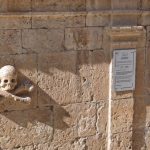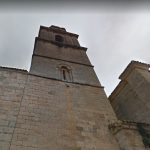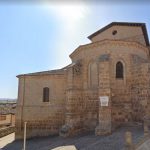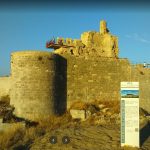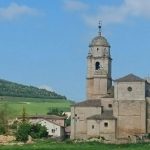Camino de Santiago 2021 | Der Blog
Montag, 22. März: 10,3 km
Manches Mal muss man auch mal an die Grenzen gehen und dann packt es einen und man rennt einfach los.
Mein persönlicher Rekord auf 10km sind 52min, das ist aber auch ein Weilchen her und vielleicht ein bisschen viel verlangt nach drei Stunden Zoomkonferenz.
Aber immerhin unter 1 Std: 56min.
Der Sinn in den Gebräuchen der Gastfreundschaft ist: das Feindliche im Fremden zu lähmen. Wo man im Fremden nicht mehr zunächst den Feind empfindet, nimmt die Gastfreundschaft ab; sie blüht, so lange ihre böse Voraussetzung blüht.
Friedrich Nietzsche
Castrojeriz
Ein nordspanischer Ort und eine Gemeinde (municipio) mit 796 Einwohnern (Stand 1. Januar 2019) am Jakobsweg in der Provinz Burgos der Autonomen Region Kastilien-León. Das historische Ortszentrum ist als Kulturgut (Bien de Interés Cultural) in der Kategorie Conjunto histórico-artístico eingestuft.
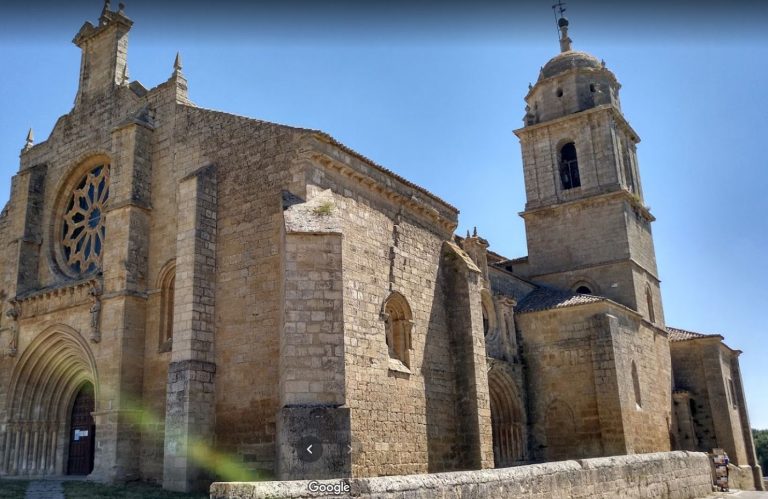
Bronzezeitliche Keramik wurde entdeckt, doch aus keltischer, römischer, westgotischer und selbst maurischer Zeit fehlen archäologisch verwertbare Spuren. Die erste Erwähnung des Ortsnamens Castrum Sigerici stammt aus dem 9. Jahrhundert, der Anfangszeit der christlichen Rückeroberung (reconquista). Um die Mitte des 11. Jahrhunderts wurden die Mauren endgültig bis an die Duero-Grenze zurückgedrängt.[4] Im Mittelalter und in der frühen Neuzeit erlebte der Ort seine Blütezeit, die sich im Bau mehrerer Kirchen und Pilgerhospize widerspiegelt. Heute ist der Ort nur noch teilweise bewohnt; viele Häuser verfallen.
Mit dem Bau der gotischen Stiftskirche (Colegiata de Nuestra Señora del Manzano) wurde im Jahr 1214 begonnen, doch stammt der heutige Kirchenbau im Wesentlichen aus der Zeit um 1500. Beide Portale und die Fensterrose sind spätgotisch, doch ohne jeden Figurenschmuck. Die beiden oberen Turmgeschosse stammen aus der Renaissance und dem Frühbarock. Das Innere der Kirche ist dreischiffig und verfügt über einen gitterumgebenen Binnenchor mit Chorgestühl. In den drei Apsiden, im gesamten Chorbereich und in den Seitenkapellen befinden sich mehrere imposante Barockaltäre.
The origins of the temple are unknown, although in the 10th century Count Garcí Fernández granted a privilege to the canons of the collegiate church, in which the canons were authorized to build tower houses and fortresses in the municipality of Castrojeriz , to which the Count Garcí Fernández granted his charters in 974 .
In the same privilege, the count equated the canons with the villainous knights of the town and established that the canons and clerics of Castrojeriz could have five hundred salaries like the Fixed dalgo of Castile , that if someone were to insult them or do violence in their dwellings they should pay a fine of five hundred salaries, and that if someone kills or injures a canon or religious of Castrojeriz, they should deliver a sum of five hundred salaries to the relatives of the victim. This privilege was confirmed, according to Enrique Flórez in his work Spain Sagrada , by King Fernando IV the Emplazado in the year 1299 , during the period of the king’s minority age. 2
In 1050 it was linked to the monastery of San Millán de la Cogolla , located in La Rioja , by King García Sánchez III of Navarra , and was renamed the Abbey of Santa María de Castro. However, when the Navarrese monarch lost his Castilian possessions, the collegiate church remained as an exempt abbey for several decades, until during the reign of Alfonso VII the Emperor was linked to the cathedral of Burgos by said monarch, who granted the abbot of Castrojeriz the rank of dignity in the cathedral and allowed him to occupy the tenth chair of the choir of the Burgos cathedral. In 1173 , during the reign of Alfonso VIIIof Castile, the collegiate church was secularized and abandoned the rule of San Benito .
At the end of the 15th century and the beginning of the 16th century, the Manzano collegiate church underwent some reforms, such as the transformation of some of its vaults and the execution of the rose window on the main portal. In the 18th century , the factory and the head of the church, the tower and the roofs of the temple were renovated, and the chapel of the Virgen del Manzano, the chaplains ’sacristy, the canons‘ sacristy, the county crypt, were built. a new apse and the choir. The Biscayan architect Juan de Sagarvinaga intervened in the works .
In the 18th century , according to Father Flórez in Sacred Spain , masses were celebrated in the temple in memory of Alfonso VII the Emperor , Sancho IV of Castile and his wife, Queen María de Molina , and Fernando IV of Castile. and his wife, Queen Constanza of Portugal . The same author refers that in the 18th century the chapter of the collegiate church of Nuestra Señora del Manzano was made up of the abbot, twelve canons, three dignitaries and eight racioneros. 2
